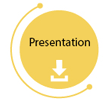-
Patricia C Cramer
Bio statement : Dr. Cramer is an independent wildlife researcher with a position at Utah State University. She is known throughout the United States for her work on wildlife crossings, both for her research on the most effective structure designs for ungulates and carnivores, and for incorporating the concerns of wildlife into the transportation planning processes.
Country : US
Contact : cramerwildlife@gmail.com
Website :
The collection of accurate wildlife-vehicle collision (WVC) carcass data is a critical part of planning processes for developing priority wildlife mitigation efforts. In western U.S. states in the Rocky Mountains, the collection of these carcass data is becoming standardized and incorporated into transportation planning. This paper presents the results of several transportation agency-funded studies in the U.S. where the objectives were to help reduce WVC through the collection and synthesis of such data. In Idaho the researchers created a WVC mitigation prioritization process to standardize how locations for future mitigation were objectively selected. In Utah, a smartphone app was created and is used to locate top priority WVC locations. In South Dakota, a Department of Transportation study used WVC crash and carcass data to help identify top WVC locations and and to identify the needed improvements for future data collection. During these studies the researchers learned how other jurisdictions collected and used carcass data. Results from these studies demonstrated that: 1. If the carcass data are not collected accurately and systematically across a state, the data cannot be used in making systemic transportation decisions; 2. When the data collection is accurate, robust, and standardized, agencies use the carcass data to document the extent of the WVC problem and to help justify their actions; and 3.When carcass data are systematically collected, a conversion factor of carcasses to reported collisions can be estimated to help establish a more true estimate of the number of animals killed, and thus help place a monetary value on the magnitude of the problem. An ancillary result of the studies was that agency professionals in regions within a state with lower WVC carcass reporting effort came to realize that future funding for mitigation was tied to data that their regions did not have, thus disqualifying them for receiving potential funding. Our team found there were seven basic steps to helping reduce WVC with data: 1. Compile accurate WVC crash and carcass data; 2. Map WVC crash and possibly carcass data; 3. Integrate wildlife agency wildlife habitat and linkage maps into transportation planning; 4. Evaluate the potential mitigation action choices; 5. Perform benefit-cost analyses on mitigation options; 6. Standardize regular interactions between transportation and wildlife agencies; and 7. Create a statewide process to objectively prioritize locations for mitigation. In conclusion, our studies found that states with standardized WVC carcass collection systematically used the data to make decisions on where to mitigate roads for wildlife, and other states were working toward this goal. The results of these studies build on one another, as each state learns of what others are accomplishing with carcass and other data collected. The presentation of the series of steps and the longer term steps along this continuum of actions will help other international efforts to evaluate how far each effort needs to progress to best incorporate carcass data into decision-making for transportation.
wildlife-vehicle collisions, animal-vehicle collisions, WVC, AVC, carcass data, transportation planning, wildlife mitigation, faunal passages
